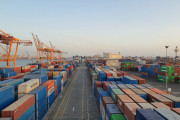When considering US overseas warehousing solutions, one of the crucial factors that businesses must navigate is the minimum order quantities (MOQs). MOQs play a pivotal role in determining the feasibility and cost-effectiveness of utilizing overseas warehousing facilities.

So, what are the minimum order quantities for US overseas warehousing? The answer to this question varies depending on several factors:
1. **Product Type**: Different types of products may have varying MOQ requirements. For example, electronics may have higher MOQs compared to clothing items due to storage and handling considerations.
2. **Supplier Policies**: Each overseas warehouse and supplier may have their own set of MOQs based on their operational capabilities and business strategies. It's essential to clarify these details with potential warehouse partners.

3. **Market Demand**: MOQs can also be influenced by market demand fluctuations. During peak seasons or times of high demand, warehouses may enforce higher MOQs to manage inventory efficiently.

4. **Cost Considerations**: MOQs often correlate with pricing strategies. Higher MOQs may enable bulk purchasing advantages, leading to lower unit costs per item. This can be advantageous for businesses looking to optimize their supply chain costs.
For small and medium-sized enterprises (SMEs) exploring US overseas warehousing options, navigating MOQs can be challenging yet rewarding. It's essential to find a balance between meeting supplier requirements and maintaining optimal inventory levels.
In conclusion, understanding what are the minimum order quantities for US overseas warehousing is crucial for making informed decisions about supply chain management. By carefully assessing product types, supplier policies, market dynamics, and cost implications, businesses can strategically leverage overseas warehousing to enhance their operational efficiency and market competitiveness.